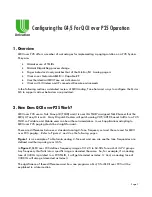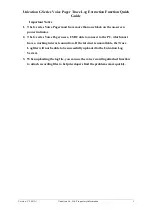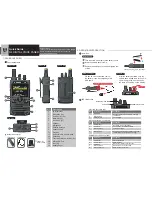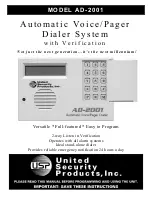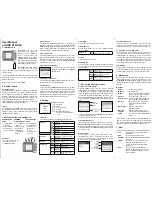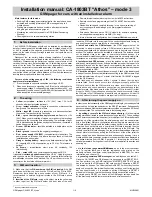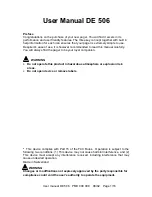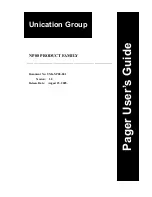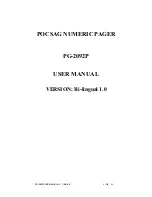
Page 9
6.
Talk Group List
- This table lists the TGIDs to be listened to. How the pager behaves is explained
in Figure 11.
7.
Revert- Talk Group List
- This list is only available when Selective Reset modes are chosen. How
the pager behaves is explained in Figure 11.
8.
Sub-Group Setting
- This is a setting associated with the Talk Group Lists and it allows the
assignment of QCII IDs to specific TGIDs. In Figure 10 the Sub-Group is selected and , for this
example, a TGID assigned multiple QCII IDs is shown. Another important setting is
Alternatives
and its function is explained in Figure 11.
Figure 10
5.
Configuring the G4/5 for Different Behaviors
Figure 11 provides different Use Case Scenarios and the associated settings.
A.
Scenario 1
- is identical to the analog Selective Call operation. In this case the pager is mute until it
detects a programmed QCII ID and stores the paging voice message. After the voice message, the
pager goes to stand-by mode awaiting a new page.
However, if a TGID is assigned to either Table that is not associated with a QCII ID then the pager
will unmute if there is traffic. NOTE: only consider programming a non-paging TGID to a Table if the
System supports TGID Priority.
Scenario 2
- This is similar to the analog Monitor Mode where the pager is monitoring traffic on one or
more TGIDs. However, if a TGID is assigned to either Table that is not associated with a QCII ID then
the pager will unmute if there is traffic. NOTE: only consider
programming a non-paging TGID to a
Table if the System supports TGID Priority.
Scenario 5
- This is similar to Selective Call with Revert analog mode. Multiple TGIDs can be
programmed in the Revert- Talk Group List however, if a TGID that is not associated with a QCII ID or
has its Alternate Setting enabled is programmed then the pager will unmute if there is traffic on these
Summary of Contents for G4
Page 2: ...Page 2 Figure 1...
Page 3: ...Page 3 Figure 2...
Page 7: ...Page 7 Figure 7 Figure 8...
Page 12: ...Page 12 Figure 1A Figure 2A...
Page 13: ...Page 13 Figure 3A Figure 4A...

